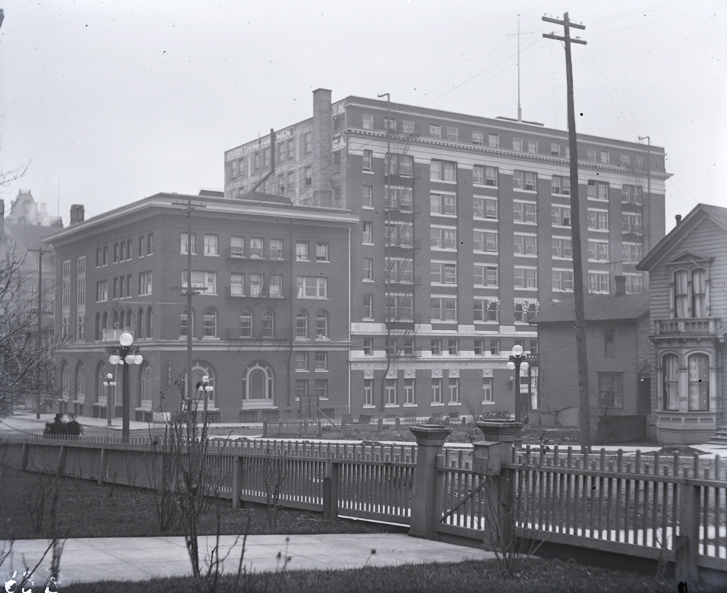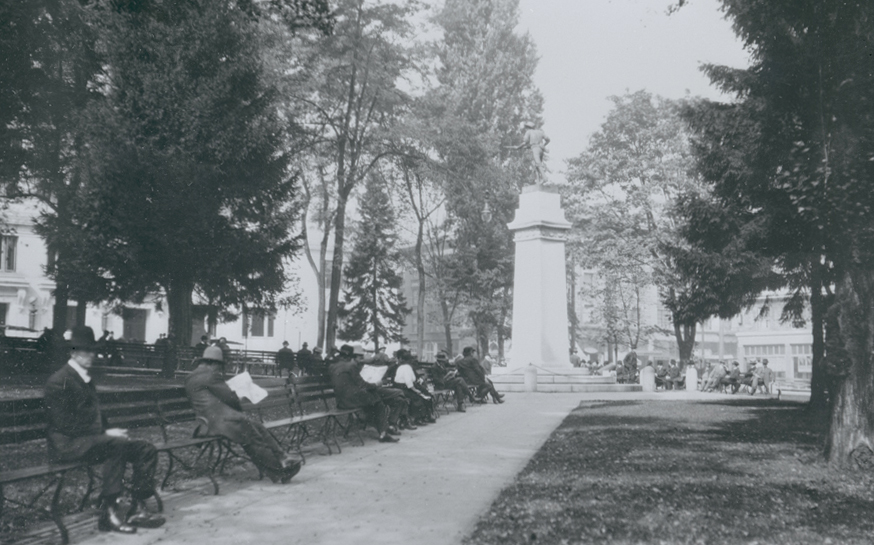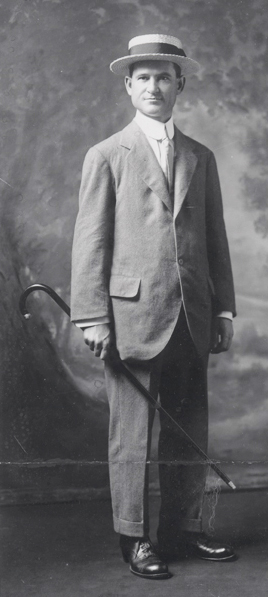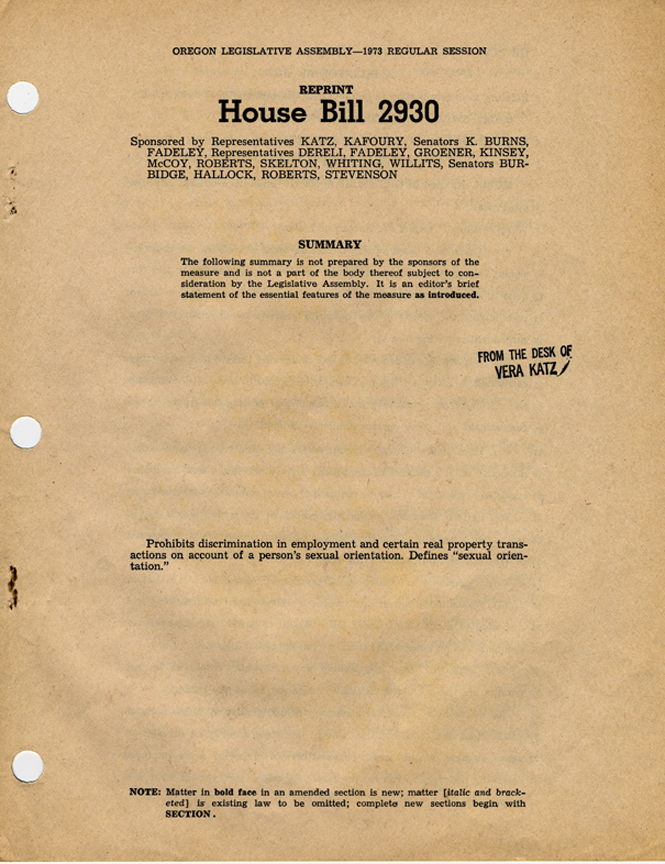On November 8, 1912, Portland police arrested nineteen-year-old Benjamin Trout for a minor offense. In the course of his interrogation, the man revealed what were considered sensational details about local homosexual activity and gathering places, a component of the city that most people knew nothing about. Portland was not unusual in this regard. At the turn of the twentieth century, gay subcultures were just beginning to appear in larger cities, and most Portlanders first learned about local homosexuals as a result of the young man’s confession.
The so-called Portland Vice Scandal consumed newspaper headlines for several weeks, and its legacy would last for decades. The man's stunning disclosures quickly leaked to the local press and became front-page news. Over the next weeks, police probed deeper into local vice conditions and apprehended dozens of men and youths for crimes ranging from so-called indecent acts to sodomy. As the scandal broadened, related arrests were made and investigations were conducted in neighboring states and in British Columbia. The developing story made headlines across the country. Even one of Oregon's U.S. representatives, A.W. Lafferty, briefly brought the issue before Congress.
The greatest impact, however, was local. Portland discovered that city parks (such as Lownsdale, Oaks, and Council Crest), busy thoroughfares (such as downtown's Washington Street), and restrooms (such as those at the illustrious Imperial Hotel) served as local hangouts for men interested in sex with other men. Incomplete records make it difficult to know exactly how many men the Portland police arrested in connection with the affair, but more than fifty were implicated. Many were collared as witnesses, and others faced charges of sodomy, oral sex, indecent and immoral acts, crimes against nature, and contributing to the delinquency of a minor. Most found their charges dismissed due to a lack of corroborating evidence, but at least seven pled guilty or were convicted.
A few of those implicated roomed at the YMCA, and one of the accused, driven by humiliation, committed suicide in his room there. Because the YMCA received support from Portland's "better classes" and some lawyers and physicians had been arrested in the scandal, the Y and its sponsors became the target of working-class newspapers, most notably the Portland News. The paper’s editor, Dana Sleeth, had been waging a journalistic war against Portland's upper crust for some time. It was the height of the Progressive Era in Portland and the nation, and labor typically found itself arrayed against wealthy corporations, battling for better working conditions, higher wages, and even for a different vision of America's future. That the wealthy and their institutions seemed to be the guilty parties in the "immorality" of the vice scandal only added to Sleeth's vitriol.
Primarily because of the Portland Vice Scandal, local schools began to teach sex education that promoted heterosexuality. It also led states throughout the Northwest to strengthen and expand sodomy laws and, in the 1910s and 1920s, to encourage Oregon, Washington, and Idaho to adopt eugenics programs that prescribed the sterilization of sex offenders.
-
![Portland YMCA and YWCA buildings, Taylor St. between 6th and 7th Sts., Feb. 1910.]()
Portland YWCA and YMCA, 1910, bb008501.
Portland YMCA and YWCA buildings, Taylor St. between 6th and 7th Sts., Feb. 1910. Oreg. Hist. Soc. Research Libr., bb008501
-
![Lownsdale Park, Portland, about 1910.]()
Lownsdale Park, Portland, ca 1910, bb008493.
Lownsdale Park, Portland, about 1910. Oreg. Hist. Soc. Research Libr., bb008493
-
![A.W. Lafferty, about 1910.]()
Lafferty, A.W., ca 1910, bb008479.
A.W. Lafferty, about 1910. Oreg. Hist. Soc. Research Libr., bb008479
Related Entries
Related Historical Records
Map This on the Oregon History WayFinder
The Oregon History Wayfinder is an interactive map that identifies significant places, people, and events in Oregon history.
Further Reading
Boag, Peter. "Sex & Politics in Progressive-Era Portland and Eugene: The Local Response to the 1912 Same-Sex Vice Scandal." Oregon Historical Quarterly 100:2 (Summer 1999), 158-181.
Boag, Peter. Same-Sex Affairs: Constructing and Controlling Homosexuality in the Pacific Northwest. Berkeley: University of California Press, 2003.
Gustav-Wrathall, John Donald. Take the Young Stranger by the Hand: Same-Sex Relations and the YMCA. Chicago: University of Chicago Press, 1998.
Katz, Jonathan Ned. The Invention of Heterosexuality. New York: Plume, 1996.




